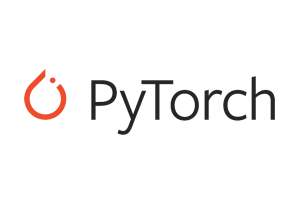2022-05-01
Top 10 Python Libraries for Document Classification
Unlock the power of document classification with these top Python libraries! Discover the best tools for effortless text analysis and more.
Document classification is the task of assigning a document to one or more predefined categories based on its content. This is a common task in many areas, including natural language processing, information retrieval, and machine learning. Python has a wide range of libraries that can be used for document classification, and in this blog post, we will explore the top 10 Python libraries for this task.
- 1. Scikit-learn
- 2. NLTK
- 3. Gensim
- 4. TensorFlow
- 5. PyTorch
- 6. Keras
- 7. PyCaret
- 8. FastText
- 9. PyText
- 10. TextBlob
- Other tools
1. Scikit-learn

Scikit-learn is a popular machine learning library for Python that provides a wide range of algorithms for document classification. It offers a simple and easy-to-use interface for training and testing machine learning models. Scikit-learn supports various feature extraction techniques, such as bag-of-words, TF-IDF, and word embeddings, which are essential for document classification tasks.
GitHub: https://github.com/scikit-learn/scikit-learn
References:
- Working With Text Data — scikit-learn 1.2.1 documentation
- Machine Learning, NLP: Text Classification using scikit-learn, python and NLTK. | by Javed Shaikh | Towards Data Science
- Text Classification with Python and Scikit-Learn
- Classification of text documents using sparse features — scikit-learn 1.2.1 documentation
- Text Classification Using Python and Scikit-learn
- Text Classification with sklearn - Sanjaya’s Blog
2. NLTK
The Natural Language Toolkit (NLTK) is a library that provides various tools and algorithms for natural language processing. NLTK offers a range of tools for document classification, including feature extraction, classification algorithms, and performance evaluation. NLTK also provides pre-trained models for sentiment analysis, text classification, and other NLP tasks.
GitHub: https://github.com/nltk/nltk
References:
- Python Programming Tutorials
- Text Classification with NLTK | Chan`s Jupyter
- 6. Learning to Classify Text
- Text Classification using NLTK | Foundations of AI & ML
- Movie Reviews (Text) Classification Using NLTK | by Bhattaram Manojkumar | Medium
3. Gensim

Gensim is a Python library for topic modeling, text summarization, and document similarity analysis. It offers various algorithms for document classification, including Latent Dirichlet Allocation (LDA), Hierarchical Dirichlet Process (HDP), and Random Projections. Gensim is widely used for document classification in the field of information retrieval.
GitHub: https://github.com/RaRe-Technologies/gensim
References:
- Implementing multi-class text classification with Doc2Vec | by Dipika Baad | Towards Data Science
- Multi-Class Text Classification with Doc2Vec & Logistic Regression | by Susan Li | Towards Data Science
- How to classify text using Word2Vec - Thinking Neuron
-
Word2Vec For Text Classification [How To In Python & CNN]
4. TensorFlow
TensorFlow is a popular machine learning library that provides a wide range of tools and algorithms for document classification. TensorFlow offers various deep learning architectures, such as Convolutional Neural Networks (CNNs) and Recurrent Neural Networks (RNNs), which are widely used for document classification tasks. TensorFlow also supports transfer learning, which allows us to use pre-trained models for document classification.
GitHub: https://github.com/tensorflow/tensorflow
References:
- Basic text classification | TensorFlow Core
- Text classification with an RNN | TensorFlow
- Classify text with BERT | Text | TensorFlow
- Text Classification with Movie Reviews | TensorFlow Hub
- Multi Class Text Classification with LSTM using TensorFlow 2.0 | by Susan Li | Towards Data Science
- Multi-class Text Classification using BERT and TensorFlow | by Nicolo Cosimo Albanese | Towards Data Science
5. PyTorch

PyTorch is a machine learning library that provides a range of tools and algorithms for document classification. PyTorch offers various deep learning architectures, such as Convolutional Neural Networks (CNNs) and Recurrent Neural Networks (RNNs), which are widely used for document classification tasks. PyTorch also supports transfer learning and provides pre-trained models for document classification.
GitHub: https://github.com/pytorch/pytorch
References:
- Text classification with the torchtext library — PyTorch Tutorials 1.13.1+cu117 documentation
- Text Classification with LSTMs in PyTorch | by Fernando López | Towards Data Science
- Site Unreachable
- Text Classification with BERT in PyTorch | by Ruben Winastwan | Towards Data Science
- prakashpandey9/Text-Classification-Pytorch - Text classification using deep learning models in Pytorch
- Multiclass Text Classification using LSTM in Pytorch | by Aakanksha NS | Towards Data Science
- RBeaudet/Text-Classification-Using-PyTorch - A didactic repository to understand Deep Learning models for text classification using PyTorch
- Text Classification Using Transformers (Pytorch Implementation) | by Yassine Hamdaoui | The Startup | Medium
6. Keras

Keras is a high-level deep learning library that provides a simple and easy-to-use interface for building neural networks. Keras offers various deep learning architectures, such as Convolutional Neural Networks (CNNs) and Recurrent Neural Networks (RNNs), which are widely used for document classification tasks. Keras also provides pre-trained models for document classification.
GitHub: https://github.com/keras-team/keras
References:
- Text classification from scratch
- Practical Text Classification With Python and Keras – Real Python
- Large-scale multi-label text classification
- Text classification with Transformer
7. PyCaret

PyCaret is a Python library for machine learning that provides various tools and algorithms for document classification. PyCaret offers a range of machine learning algorithms, such as logistic regression, support vector machines (SVMs), and decision trees, which are widely used for document classification tasks. PyCaret also provides automated machine learning (AutoML) capabilities, which can help us to quickly build and deploy machine learning models.
GitHub:
References:
- NLP Text Classification in Python using PyCaret - PyCaret Official
- pycaret/NLP Text-Classification in Python using PyCaret.md at master · pycaret/pycaret · GitHub
- Site Unreachable
- NLP Text-Classification in Python: PyCaret Approach Vs The Traditional Approach | by Prateek Baghel | Towards Data Science
- Beginner's Guide to Classifying Text with PyCaret | Datapeaker
8. FastText

FastText is a library for text classification and word representation learning. It provides a simple and easy-to-use interface for building text classifiers. FastText is widely used for document classification tasks, especially for multilingual text classification. FastText also supports various feature extraction techniques, such as bag-of-words and n-gram features.
GitHub: https://github.com/facebookresearch/fastText/
References:
- Text classification · fastText
- fastText for Text Classification. I explore a fastText classifier for… | by Shraddha Anala | Towards Data Science
- fasttext
- FastText Working and Implementation - GeeksforGeeks
- Text Classification with FastText | by Rukshan Jayasekara | Medium
9. PyText
PyText is a deep learning library for natural language processing that provides various tools and algorithms for document classification. PyText offers a range of deep learning architectures, such as Convolutional Neural Networks (CNNs) and Recurrent Neural Networks (RNNs), which are widely used for document classification tasks. PyText also provides pre-trained models for document classification and supports transfer learning.
GitHub: https://github.com/facebookresearch/pytext
NOTE: Project repository on GitHub is now in archive state.
References:
- Text/Document Classification using PyText | by Jay Rodge | Medium
- Train your first model — PyText documentation
- PyText Documentation — PyText documentation
10. TextBlob
TextBlob is a library for processing textual data in Python. It provides various tools for natural language processing, including sentiment analysis, part-of-speech tagging, and text classification. TextBlob offers a simple and easy-to-use interface for building text classifiers. TextBlob is widely used for document classification tasks, especially for small datasets.
Summary
Python offers a wide range of libraries for document classification. Each library has its own strengths and weaknesses, and the choice of library depends on the specific requirements of the task at hand. Scikit-learn, NLTK, Gensim, TensorFlow, PyTorch, Keras, PyCaret, FastText, PyText, and TextBlob are the top 10 Python libraries for document classification that we have explored in this blog post. By using these libraries, we can easily build and deploy machine learning models for document classification tasks.
GitHub: https://github.com/sloria/TextBlob
References:
- Tutorial: Building a Text Classification System — TextBlob 0.16.0 documentation
- Site Unreachable
- Tutorial: Simple Text Classification with Python and TextBlob | stevenloria.com
- Naive bayesian text classifier using textblob and python - Learn Steps
- NLP for beginners | Classifying text using TextBlob | Datapeaker
Other tools
Here are 20 more Python libraries for document classification that were not discussed in this article:
- Spacy
- Flair
- AllenNLP
- Transformers
- Vowpal Wabbit
- LightGBM
- XGBoost
- CatBoost
- HuggingFace
- MXNet
- Theano
- Caffe2
- TorchText
- Stanford CoreNLP
- Textacy
- Pattern
- Polyglot
- Apache Tika
- Apache Lucene
- PyTorch-NLP
Each of these libraries has its own unique features and benefits, and can be used for various document classification tasks. Some of them offer deep learning architectures, while others focus on traditional machine learning algorithms. By exploring these additional libraries, you can further expand your options for document classification in Python.
To cite this article:
@article{Saf2022Top,
author = {Krystian Safjan},
title = {Top 10 Python Libraries for Document Classification},
journal = {Krystian's Safjan Blog},
year = {2022},
}
Tags:
document-intelligence
AI
python
document-processing
document-data-extraction
machine-learning
natural-language-processing
NLP
text-classification
scikit-learn
NLTK
Gensim
TensorFlow
PyTorch
Keras
PyCaret
FastText
PyText
TextBlob
Spacy
Flair
AllenNLP
Transformers
Vowpal Wabbit
LightGBM
XGBoost
CatBoost
HuggingFace
MXNet
Theano
Caffe2
TorchText
Stanford-CoreNLP
Textacy
Pattern
Polyglot
Apache-Tika
Apache-Lucene
PyTorch-NLP

